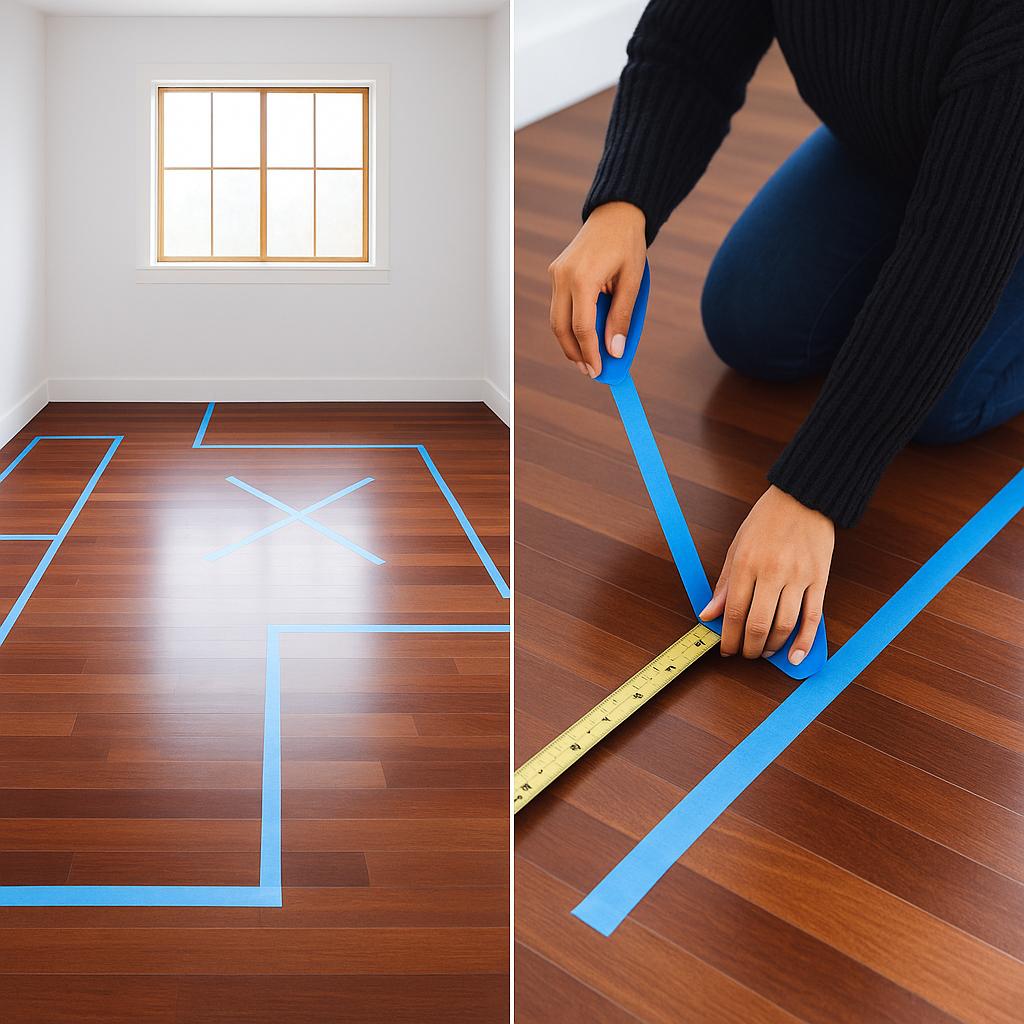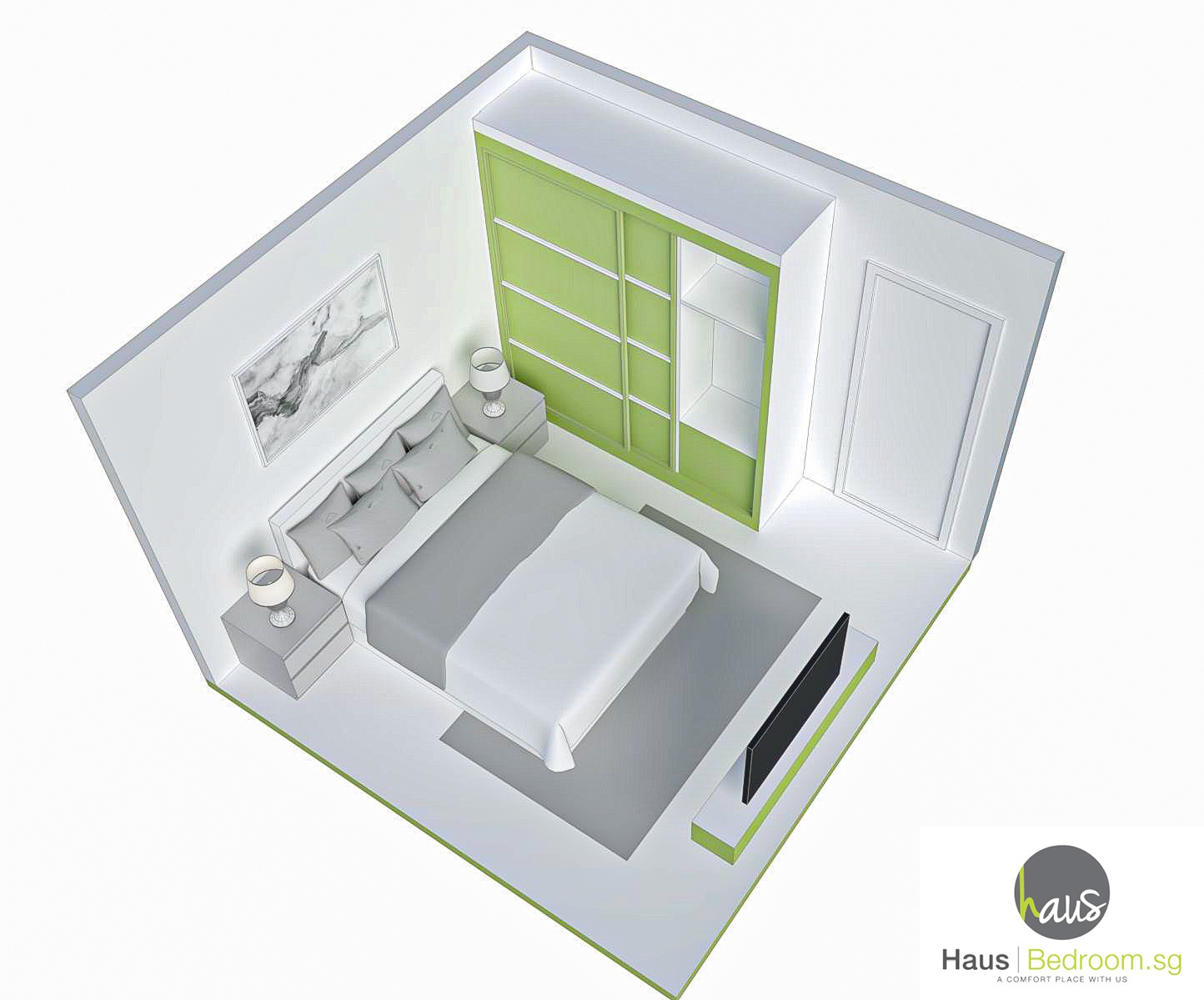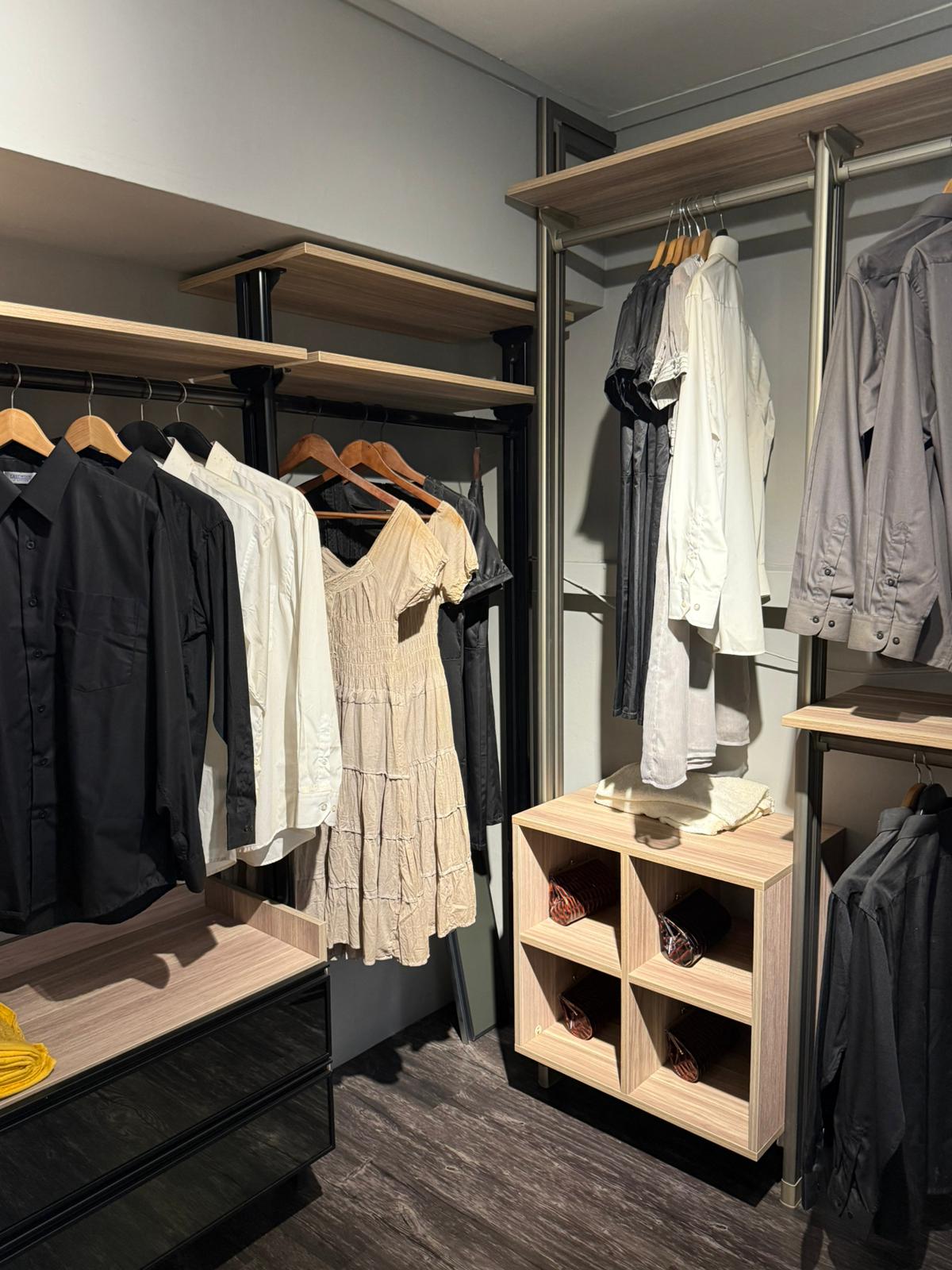Custom Wardrobes in Singapore: Everything You Must Know Before You Build
Step 1: Assess Your Space and Lifestyle
Before you dive into Pinterest boards or bookmark Instagram ideas, take a moment to evaluate your actual needs:
Measure accurately
- Mark out the floor space and clearance zones (aim for at least 600 mm between bed and wardrobe).
- Double-check ceiling height and any protrusions (pillars, beams, windows) that may affect installation.
Understand your habits
- Do you hang most clothes or fold them?
- Will you need separate zones for you and your partner?
- How much shoe or accessory storage do you require?
Future-proofing
- Account for wardrobe growth—new clothes, seasonal items, or changing family needs.
- Plan enough space now to avoid overcrowding later.

Tip: Use masking tape on the floor to outline your proposed wardrobe footprint and test door swing (or sliding clearance) before committing to a design.
Step 2: Choose the Right Layout
Different room shapes and sizes call for distinct configurations. Here are common layout types for Singapore bedrooms:
| Layout Type | Best For | Notes |
|---|---|---|
| Side-by-side | Standard bedrooms | Efficient, balanced, and symmetrical |
| L-shape | Corners, walk-in concepts | Ideal for shared wardrobes or corner spaces |
| U-shape | Large walk-in areas | Maximizes perimeter walls and storage |
| Pass-through | Connecting bathrooms or suites | Adds a luxury feel but needs more planning |



At HausBedroom, we recommend layouts that follow “reach zone” principles—placing frequently used items at waist to eye level for ergonomic daily use.
Step 3: Select Your Finish & Look

“Custom” doesn’t mean “anything goes”—it means the design is tailored to your space, tastes, and lifestyle. Here’s how to approach finishes and materials:
1. Wardrobe Framework
- Built-in wardrobe (wooden backing): Seamlessly blends into walls; best for a flush, minimalist look.
- Modular wardrobe system (wall-mounted): Uses your existing wall, can be relocated later, and allows easy adjustment of shelves and rods. Learn more about our HausFlex system.
2. Shelving Materials
- Plywood with PVC laminate: Durable, cost-effective, and moisture-resistant—great for humid climates.
- Plywood with HPL (High-Pressure Laminate): Offers more premium finishes and scratch resistance.
- Particle board with melamine surface: Budget-friendly and available in various decors, though less robust than plywood.
- Metal shelves: Sleek, industrial look; excellent for ventilated storage (e.g., shoes).
3. Door Styles
- Open concept: No doors—everything is on display. Perfect for neat, minimalist homes with ample airflow.
- Sliding doors: Ideal for narrow corridors or tight walkways since they don’t require swing space.
- Bi-fold doors: Fold inward smoothly, saving floor area—no bottom runners needed.
- Casement (swing) doors: Traditional hinged doors; give a classic, showroom-style appearance.
4. Door Finishes
- HPL (High-Pressure Laminate): Available in countless colours and textures; easy to clean and maintain.
- Glass panels: Frosted or tinted options lend a sophisticated touch; ideal for reflecting light in small rooms.
- Mirror panels: Visually expand the space and serve a dual purpose—check your outfit while dressing.
You can mix materials for different zones. For example, use a matte finish on exterior doors for a clean façade and a woodgrain texture for interior compartments to create visual warmth.
Key Tip: Always request physical finish samples to view under your room’s lighting before making a final selection.
Step 4: Don’t Forget the Accessories

A custom wardrobe is only as good as its interior planning. Consider these “must-haves” and optional upgrades:
- Must-Haves:
- Adjustable shelves: Flexibility to accommodate folded clothes, bags, and décor pieces.
- Soft-close drawers: Prevent rattles and give a premium feel.
- Long-hang + short-hang sections: Accommodate dresses, coats, shirts, and pants.
- Divided trays for accessories: Keep ties, watches, and belts neatly organized.
- Pull-out mirror or dedicated dressing table: If space allows, having a built-in mirror or vanity area adds convenience.
- Optional Upgrades:
- Trouser racks: Keep pants wrinkle-free and easily accessible.
- Jewellery drawers: Padded compartments to protect delicate items.
- Seasonal box storage: High-up pigeon holes or overhead compartments for off-season clothing and linens.
- Built-in vanity or “His & Hers” zoning: Create personalized zones for two users, complete with lighting and outlets for grooming tools.
Step 5: Budgeting & Execution
Planning your budget early helps you avoid surprises. Here’s a rough cost breakdown:
| Component | % of Budget |
|---|---|
| Carcass & Structure | 40% |
| Finishes & Materials | 25% |
| Accessories | 20% |
| Installation & Customization | 15% |
In Singapore, a custom wardrobe typically ranges from SGD 1,200 (basic, smaller units) up to SGD 4,000+ (premium materials, extensive accessories, and larger dimensions). Your final cost will depend on size, choice of materials, and level of customization.
Pro Tip: Get at least two or three quotes from reputable carpentry firms (including HausBedroom) and compare detailed breakdowns—avoid vague lump-sum estimates.
Why Homeowners Choose HausBedroom
When you work with HausBedroom, you get more than just a wardrobe; you get a full end-to-end experience:
- Modular Adjustability:
- German CNC Precision Manufacturing:
- Every panel and component is cut with micrometre accuracy, ensuring seamless fit and finish.
- Consistent quality means your doors close flush, drawers align perfectly, and there are no unsightly gaps.
- Space-Maximizing Designs:
- We optimize every centimetre—integrating pull-out mirrors, overhead pigeon holes, and concealed drawers to maximize storage.
- Reach zone planning places frequently used items at the perfect height to reduce daily friction.
- Local Production = Faster Lead Times & Customization:
- Our workshops in Singapore mean shorter lead times (4–6 weeks from sign-off to installation) versus overseas imports.
- Any last-minute tweaks (e.g., shifting a shelf by 50 mm) can be accommodated quickly.
- Transparent Pricing:
- No hidden markups—every material, hardware, and labour cost is clearly itemized.
- Flexible packages allow you to choose a “core module” and add accessories as needed.
- Honest, No-Upsell Approach:
- We don’t push extras you don’t need. We only propose solutions that make sense for your space and budget.
- Our goal is to create a comfortable, clutter-free environment—never to oversell.
- White-Glove Service from Consultation to Aftercare:
- Initial design consultation—either virtual or in-person—to understand your lifestyle and space constraints.
- Layout visualization: 3D renderings and floor plans help you “see” your wardrobe before fabrication.
- Installation and post-installation support via WhatsApp for any follow-up adjustments or maintenance queries.
Engaging HausBedroom means you benefit from expertise, trust, and a hassle-free process—so you can focus on enjoying a beautifully organized home.
Frequently Asked Questions
- How long does custom wardrobe installation take?
- Typically 4–6 weeks from design sign-off to final installation, depending on complexity and materials.
- What is the average cost of a custom wardrobe in Singapore?
- A standard custom wardrobe ranges from SGD 1,200 to SGD 4,000+, depending on size, materials, and accessories.
- Can I relocate a modular wardrobe to a new home?
- Yes. Our wall-mounted modular systems can be dismantled and reinstalled, saving you time and money when you move.
Conclusion
A custom wardrobe in Singapore is more than just storage—it transforms your bedroom into an organized, functional sanctuary. By following these five steps—assessing space, selecting the right layout, choosing finishes, fitting accessories, and setting a realistic budget—you can avoid common pitfalls and invest only in what truly adds value.
When you partner with HausBedroom, you benefit from modular adjustability, German CNC precision, and an honest, no-upsell approach. Ready to elevate your home? Book your free consultation today and let us tailor the perfect wardrobe solution for you.
Call to Action
Ready to plan your custom wardrobe in Singapore? Book your free consultation now or visit our workshop in Singapore →


